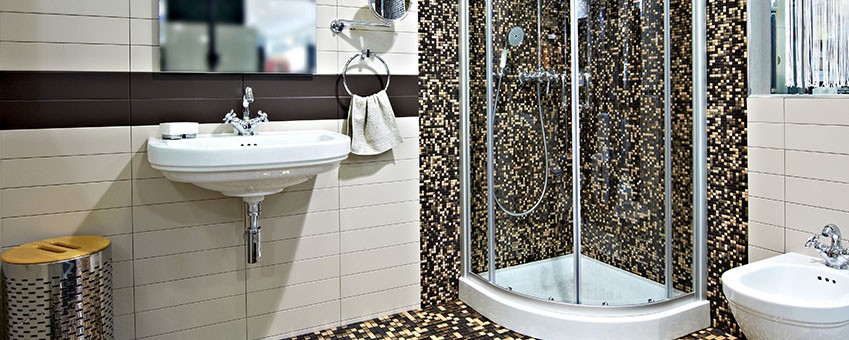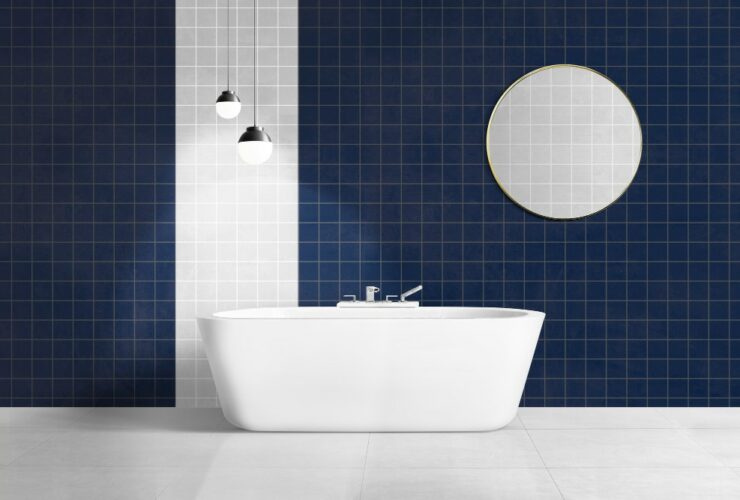Liven up your bathroom with mosaic tile patterns. Standard tile arrangements on the wall, bath or shower may lend itself to a traditional look, but you can really get creative with mosaic tile designs that complement any design style. Learn the rules to follow, the materials to use and tips to consider before starting the project.
Design rules
You can change the look of your bathroom instantly by brightening up the space with mosaic tile. You need to start with a primary color that will ground the space. You can choose to put that color on the walls and then match or complement tile colors from there.
Here are a few more rules to live by:
- Place darker colors in the lower half of the bathroom.
- Choose lighter tones that are at eye level.
- Brighter colors should go at the top of the room.
You can also break these design “rules” and let your creativity fly:
- Choose a dominant color to root the mosaic tile pattern.
- Identify a secondary color that will complement the first but will be used less often.
- Finally, choose a third tile color that will only dot the mosaic landscape.
To sum it up, use the dominant color the most in the mosaic, the secondary color a bit less, and the third color even less.
Mosaic tile materials
Natural and man-made tile options exist when creating a mosaic. Here are some of the more popular options:
- Ceramic. This type of tile is readily available and looks very much like natural stone, although it’s man-made. While the tiles are fairly weak and are ideal for decorative use such as a mosaic tile, you can find them in a wide variety of colors.
- Glass. Vitreous glass is an inexpensive, common type of tile. The opaque tiles are easy to cut and ideally suited for tile work on walls but not floors. Smalti glass tile is handmade and very expensive. Used over many centuries, this tile is meant to last. They reflect light brilliantly, and the special Gold and Silver tiles are pressed with gold or silver, offering a luxurious look.
- Organic. Natural tiles include limestone, granite, marble or basalt. You can find them sold in large sheets or individual squares of tile.
- Others. The types of tile you can use in a mosaic is really limited only by your imagination and application. Some materials for use include stones, broken china, marbles, glass, broken bottles or jewelry.
Design tips to follow
Before you choose a tile, consider these design tips:
- If you’re working with a curved element, choose smaller tiles.
- Consider the feel of the tile, too. If you’re sitting on a mosaic tile bench in the shower, will it be smooth?
- Choose a tile that offers a high level of contact. The tile should adhere strongly to the backer board for a seamless installation. Choose a tile that offers 95 percent contact or higher.
- Working with glass tile is tricky. Choose smaller tiles to get the look you’re after.
Try using mosaic tile in your bathroom to give it an elegant touch and also feature a work of art at the same time. With tile, you can create interesting patterns or an image, allowing it to be the focal point of the room. Try using small pieces of glass, stone, or ceramic tiles in the pattern. With a little bit of creativity and trial and error, you can create a timeless masterpiece in your bathroom’s design.




